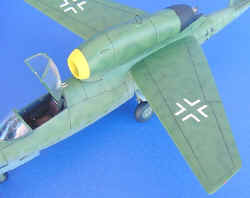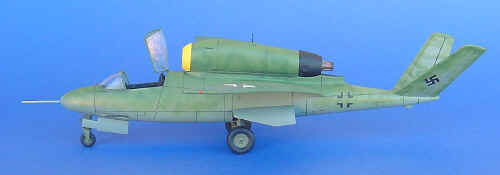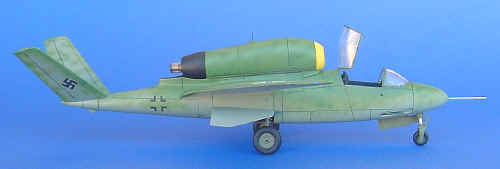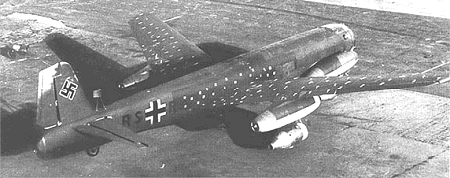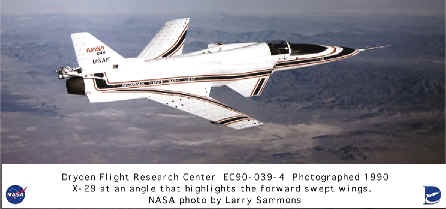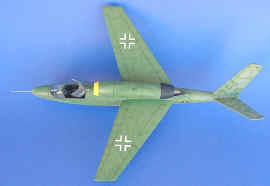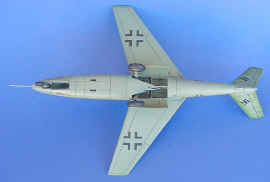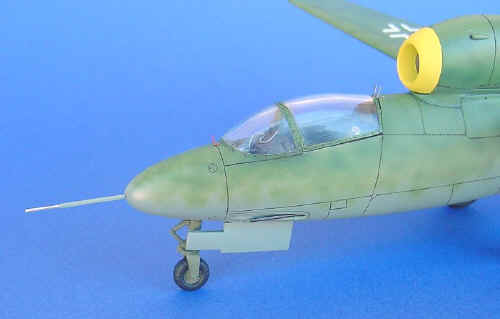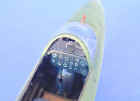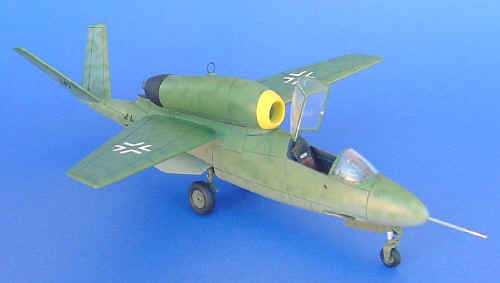 |
||||||||
|
Airplanes |
||||||||
|
Heinkel He 162 D 1/48 scale |
||||||||
|
by Marcelo Scaminaci Russo © 2003 Modeler Site |
||||||||
|
This is the third part of a series of articles which I'm writing in Modeler Site about the Heinkel He 162 development, by virtue of the sets of Antares Models; this manufacturer issued four conversions to modify the Dragon's Salamander kit in 1:48 scale ( ref.# 5508 ). We have already seen few months ago the He 162 A-10 and the He 162 C conversions
Heinkel He 162 A-10 > Here Heinkel He 162 C > Here
In this occasion, we will see the He 162 D; this is a very strange project, due to its unusual configuration. But, ¿ which one is the origin of this aircraft?
During the Second World War, the German aeronautic industry developed a great number of prototypes and experimental planes; sometimes, they did not materialized due to all kinds of indecisions and interferences. Some of this German projects were very advanced, taking into account the technological point of view. Despite of all efforts, during the War, the German aeronautic industry could never replace his two classics " hobbyhorses" in the field of fighters planes: the Focke Wulf Fw 190 and the Messerschmitt Me 109. At the end of the hostilities there were excellent jet fighters, as Me 262 and Heinkel He 162; but they came too late in the conflict to take part decisively on it. Despite Allied bombings, the factories and his engineers continued with the development of these new planes: this is the case of the He 162. On March 1945 some versions of this aircraft, came out of the drawing boards, with different wing configurations, like the forward swept one. It's possible that the Heinkel project would be based on an existing plane, which flew with this wing configuration on August 16, 1944: the Junkers Ju 287 V1.
The conversion
Only few hours will be necessary to do this modification, where the main point is to shave off the wing roots from the fuselage halves of the plastic kit; then, we must sand to smooth the surface. This will allow to fit the forward swept wings to the model. The instruction manual provides three views for a correct position of each wing. The final job is the filling of the joints with putty. A final sanding will finish our work..
Finishing the Heinkel I applied the dark green color with airbrush in continuous wavy lines as the "wellenmunster", a very common camouflage pattern used by the German planes since early 1943.
The crosses are painted using masks, and the swastikas on the tail are decals. Conclusion
|
||||||||
